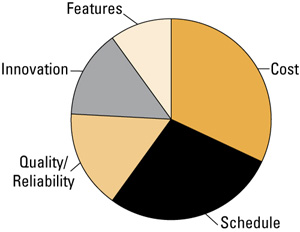 The latest edition of GSA Forum has an article by Aveek Sarkar of Apache on system design for emerging market needs. The BRIC (Brazil, Russia, India, China) type countries are characterized by a small rich segment, a large and growing middle class and a large poor segment. One big trend is that smart phone use is expanding very fast. These countries don’t have a large installed base of PCs, and almost certainly never will, so smart phones are the primary way people there access the internet. Smart phones are growing over four times as fast as the overall mobile industry.
The latest edition of GSA Forum has an article by Aveek Sarkar of Apache on system design for emerging market needs. The BRIC (Brazil, Russia, India, China) type countries are characterized by a small rich segment, a large and growing middle class and a large poor segment. One big trend is that smart phone use is expanding very fast. These countries don’t have a large installed base of PCs, and almost certainly never will, so smart phones are the primary way people there access the internet. Smart phones are growing over four times as fast as the overall mobile industry.
But smartphones are not just the same phones as we use in the US etc since different markets need different features. For example, mobile payments are huge in Kenya (search for M-pesa for details). In general, there is no bank-card infrastructure and phones are going to be the way financial transactions get done. Much of the Chinese market requires two SIM-card slots. And, although it is purely a software issue, different markets require different languages.
These markets move much faster with new designs tumbling over each other, so time to market is extremely critical. But the price point is probably the most critical, $600 is simply way too high. The way phones are largely designed is with collaboration between a chipset vendor like Mediatek, Broadcom or ST-Ericsson and a system integrator. Communication is very important.
Lack of communication leads to one of two problems: the phones don’t work or are unreliable, or else they are over-engineered and unnecessarily expensive. One problem is that because of time-to-market issues designs tend to get padded with the chip designers having to assume the worst about the board design (corners will probably be cut) and the board designers over engineering the board because they don’t know enough about the internals of the chips. Or worse, they don’t. If both groups over engineer then the design is more expensive than necessary. If both groups under-design then the design may not work at all due to, for example, power supply droop due to lack of decoupling capacitors. As clock rates continue to increase into the GHz range and voltage margins decrease, these issues are getting worse not better.
One solution to this problem it for board and chip designers to be able to provide models to each other so that the reliability can be analyzed and so the product can come to market one time and at the lowest possible price point. This allows for a full analysis of the system and avoids the $100M disaster of shipping a phone that is too unreliable to be successful.
Of course these problems of modeling chips, boards and packages, and analyzing noise and power distribution are all areas the Apache has been working on for years.
Aveek’s article is here.
Share this post via:






Comments
0 Replies to “Smartphones in the BRICs”
You must register or log in to view/post comments.